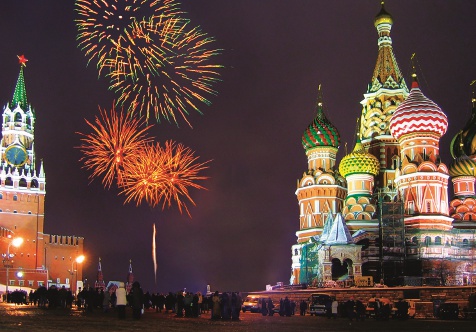In collaboration with Convergence, VOICE OF ASIA is proud to present timeless articles from the archives, reproduced digitally for your reading pleasure. Originally published in Convergence Volume 12 in 2012, we present this story on Moscow, a city steeped in history and culture as it moved towards modernity.
25 years ago, if you were to claim that Moscow would one day become a major business centre – on par with cities like Chicago and Frankfurt – you may be lucky to be just laughed at. Back in 1987, Muscovites – as well as other Russians and constituent nationalities of the then Soviet Union – were only getting a taste of the free market through Perestroika (Restructuring). Fast forward to the present, and after some growing pains, the Russian capital has become also a capital of commerce in Eastern Europe.
The Heart of Eastern Europe
Long the major political, cultural, scientific, and educational hub of Russia and Eastern Europe, Moscow has recently established its position as an economic and business powerhouse – thanks in no small part to the windfall provided by the energy boom. On a whole, the country not only has the largest petroleum industry in the world, its coal reserves are the second largest, its oil reserves the eighth largest, and it exports the most gas in the world.
The prosperity brought on by this had resulted in the rapid growth of commerce and industries. Unsurprisingly, many of these businesses are energy concerns, and among them are Gazprom – the world’s largest gas company, Novatek – Russia’s second largest gas company, Rosneft – its biggest oil company, and Lukoil – another major oil company. Apart from oil and gas companies, Moscow is also home to the country’s biggest airline – Aeroflot, its largest bank – Sberbank, and aircraft manufacturers such as Mikoyan, Sukhoi and Tupolev.
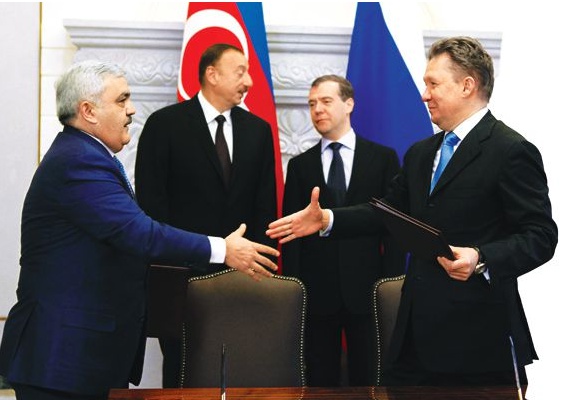
However, it is not just home-grown corporations that are making Moscow their base. A survey conducted by the realtors Cushman & Wakefiled in October 2010 revealed, that the Russian capital is “the most favoured city for businesses looking to expand”, owing to its strong GDP growth. Moscow is also the largest city economy in Eastern Europe and the third largest in Europe as a whole, with a GDP of US$321 billion.
All in all, 11.5 million people call Moscow their home, which makes it the most populated city in Russia. With an average monthly salary of approximately US$1,400 – which is almost double the national median monthly wage of US$730 – one can see why Moscow is such a popular destination for internal migration in the country. Be that as it may, the city is also considered to have one of the highest costs of living in the world, and Mercer Human Resources Consulting has named it the fourth most expensive city for expatriates.
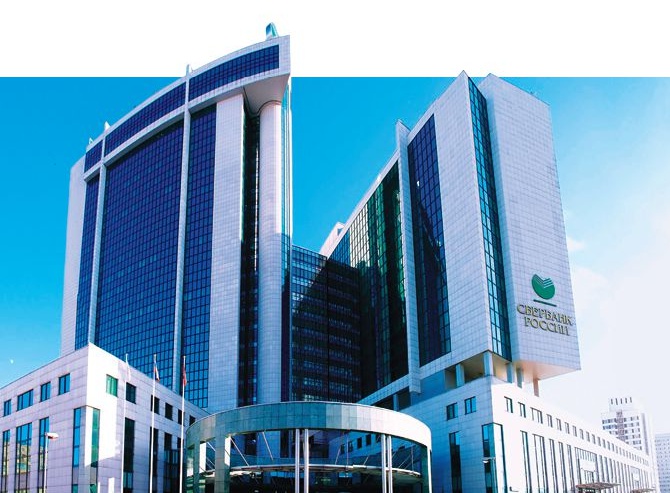
Still, it is noteworthy that just slightly over 20 years after the fall of the Soviet Union, the Russians have more or less taken to capitalism like a duck to water. As aforementioned, the post-Communist period was also a time of economic growth, which the shrewd and well-connected were able to make the most of.
The results were evident in the Forbes listing of the world’s richest people in 2011, where Moscow emerged as the city that has the most billionaires, with 79.
Business and Education
Expatriates seeking to set up a business or invest in Moscow will be well-advised to stay clear of the oil and gas business. While, it is a truism that energy has contributed much to Russia’s wealth, it is not an industry that favours newcomers – particularly those from abroad. Firstly, competition in the industry is quite saturated, and secondly, foreigners are only allowed to hold up to 25% of any Russian energy concern, as it is considered a strategic industry.
Russia at a Glance
- Official Name: The Russian Federation or Rossiyskaya Federatsiya
- Capital City: Moscow
- Other Major Cities: Saint Petersburg, Novosibirsk, Yekaterinburg, Nizhny Novgorod
- System of Government: Federal Semi-Presidential Republic
- Head of State: President Dmitry Medvedev
- Head of Government: Prime Minister Vladimir Putin
- Official Currency: Rouble
- Official Language: Russian
- Individual Tax Rate: Flat tax of 13% for resident income and 30% for non-resident income (non-resident income is monies derived from overseas work and/or investment, and is only applicable to Russian nationals)
- Corporate Tax Rate: Maximum of 20%
One point of interest for any would-be investor is that the Russian government is seeking to divest economic focus from resources to services and technology, in order to prevent having all its eggs in one basket. Fast appreciating levels of affluence promise good times for those offering consumer goods and services, while the shortage of office space spells opportunity in the construction and real estate segments.
The sector with perhaps the greatest growth has to be Information Technology, in particular software development and programming. Proof of this can be seen in the dynamic rise of Russia’s software exports in less than a decade, which increased from US$120 million in 2000 to US$2.75 billion by the start of 2010. Apart from having more than 3% of the global offshore software development market, Russia is also a favoured destination of tech giants such as Intel, Sun Microsystems, and Motorola to name a few.
It is no surprise that they are there, because they hope to tap into one of Russia’s most valuable resources – human capital. During the Soviet era, there was a heavy emphasis on scientific and technological education, and it has continued to be so even till today. This of course accounts for the country’s software boom, as well as advancements in other areas such as electronics and nanotechnology.
Moscow, is also the education capital of Russia, and its foremost institute of higher learning is the Lomonosov Moscow State University or MSU. The university, which dates back to 1755, is not only the oldest one in Russia but also the largest with approximately 30,000 undergraduate and 7,000 post-graduate students. As can be expected for an institution with history of more than 250 years, many of Russia’s prominent citizens – past and present – call the MSU their alma mater.
From the world of literature, there is the legendary playwright Anton Chekhov, who studied medicine there in the late 19th century. Another famous alumnus of the university, and someone from the political scene, is Mikhail Gorbachev – the last President of the Soviet Union and a Nobel Peace Prize laureate.
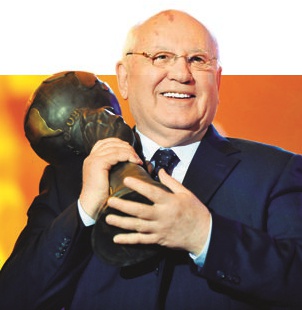
In total, including the aforementioned Gorbachev, 11 Nobel laureates studied and/or lectured at the Moscow State University. They include Ilya Frank and Igor Tamm, Lev Landau, Alexander Prokhorov, Pyotr Kapitsa, and Alexey Abrikosov and Vitaly Ginzburg for Physics in 1958, 1962, 1964, 1978 and 2003 respectively, Nikolay Semyonov for Chemistry in 1956, Boris Pasternak for Literature in 1958, and Andrei Sakharov for Peace in 1975.
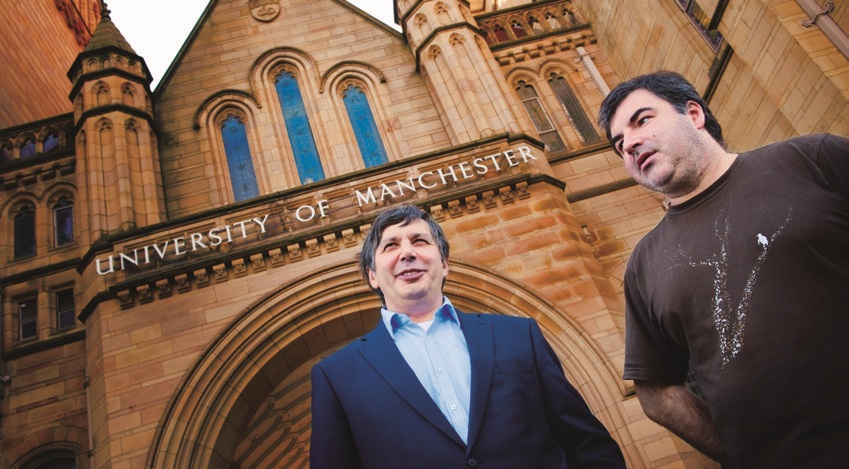
Another institute of higher learning in Moscow which has contributed to Russia’s wealth of talented scientists and technologists is the aptly named Moscow Institute of Physics and Technology, which counts 2010 Nobel Laureates for Physics – Andrey Geim and Konstantin Novoselov – among its alumni.
Education in Moscow is not confined to the sciences, as the city – being a cultural centre – also has schools and colleges dedicated to the arts. Great composers such as Sergey Rachmaninoff and Mstislav Rostropovich were graduates of the Moscow Conservatory – the country’s foremost music school. Then there is the Gersaimov All-Russian State Institute of Cinematography – the oldest film school in the world, having been founded in 1919 – where Sergei Eisenstein (the director of the seminal The Battle Potemkin) lectured.
Experience Moscow
When travelling to Moscow on business, you will want to mix some pleasure into your itinerary and take in the sights and sounds of the city that has been dubbed ‘The Third Rome’. Be forewarned though, owing to its gargantuan size – it measures 1,091 sq km, which makes it the sixth largest city in the world – and its wealth of history, culture and modern amenities, a day-trip will not be enough to take in the glories that Moscow has to offer.
For first time visitors to the Russian capital, it is perhaps best to start your Moscow adventure in Red Square. The hub of the city, it is the heart of Moscow as all major roads converge on it, and is the focal point of all city and national celebrations. Red Square was also the site of Soviet military parades during the time of the USSR; however its name predates the October Revolution of 1917 and is not connected in anyway to the red of Communism.
Adjacent to Red Square is the Kremlin, which has served and still serves as the centre of political life in Russia, as it has been the official residence of the Tsars, then the leaders of the Soviet Communist Party, and now the President of the Russian Federation. Together, Red Square and the Kremlin are listed as UNESCO World Heritage sites.
If you are pressed for time then the one place in the Kremlin that you definitely have to go to is the Armoury. For it is there that you can see the Diamond Fund – a collection of Russia’s state treasures including the Imperial crown of Catherine the Great.
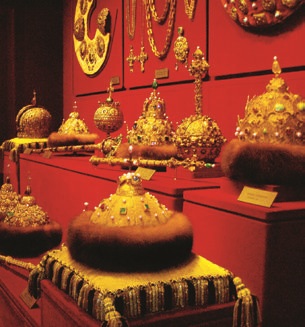
At the southern part of Red Square is one of Russia’s most famous structures – namely the Cathedral of the Protection of Most Holy Theotokos on the Moat, also known by its more common moniker – St.Basil’s Cathedral. This 16th century building is of course well-known for its Byzantine-inspired architecture and its multi-coloured domes and spires, which are meant to create the impression of fire.
Before leaving Red Square, why not make your way to the Lenin Mausoleum, which houses the embalmed body of the founder of the Soviet Union. Although post-Communist Russia has seen many vestiges of Soviet rule erased, Lenin’s body is still on display. That, however, may not be for long though as there is a much debate on whether to bury the body or keep the mausoleum open.
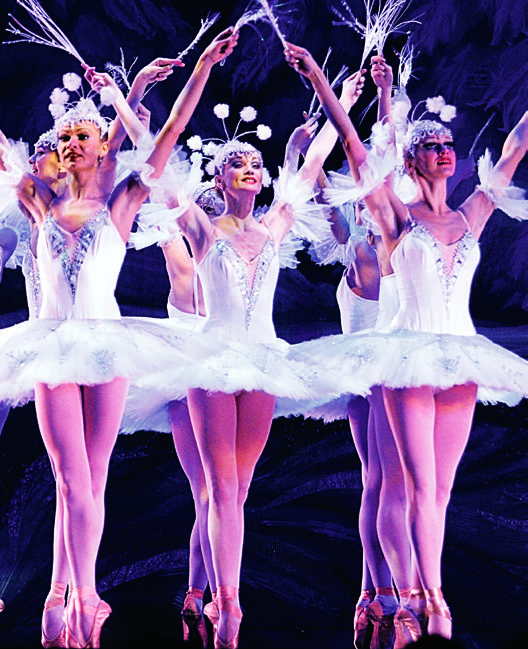
Since you are in Moscow, it would not do if you miss the Bolshoi Theatre – home of the world-renowned Bolshoi Ballet. While the theatre itself is an attraction, the real magic happens in the performance hall and for just the equivalent of US$33 onwards, you can purchase a ticket to watch some of the best dancers in the world strut their stuff.
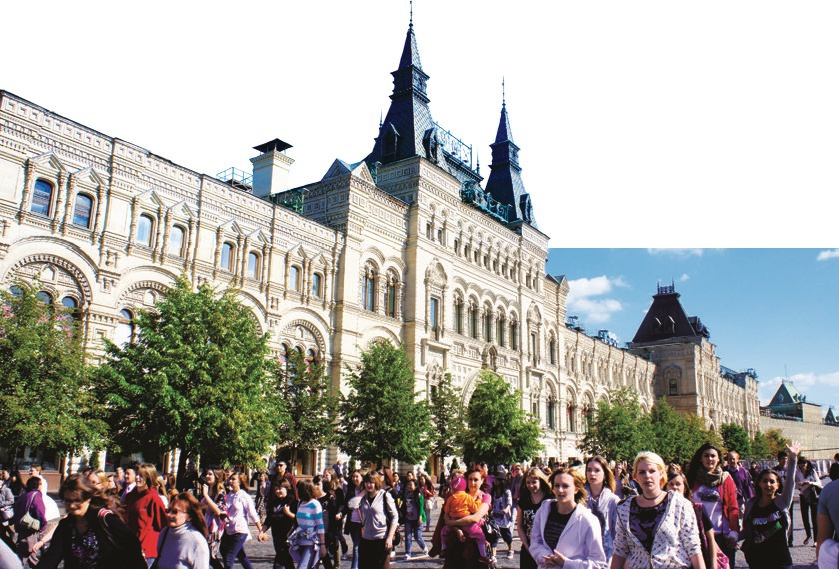
It is not all arts and culture though, as Moscow is also a place for some serious shopping, and those with cash to spare (Moscow, as noted already, is notoriously expensive) will be spoilt for choice as you can find high-end designer labels and some very classy Russian fashions in the shopping malls there. The most famous being GUM near Red Square and GOROD, which is located in a former industrial area. For those who want to purchase some mementoes of their visit to Moscow, do drop by Izmaylovskiy Market, where you can find some quaint Russian artefacts, as well as catch a performing bear show. Do be prepared to haggle though.
The Taste of Russia
Russian cuisine is a class of its own, and owing to the cold climate of the country, the dishes there are often very hearty. Convergence presents a few choice items you might want to try when you are in Moscow.
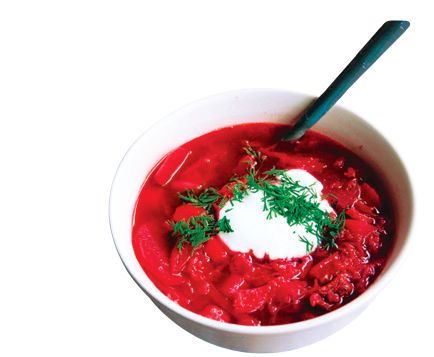
- Okroshka – This is a cold soup made with a kvass-base (a non-alcoholic drink made from fermented rye bread). It is prepared by mixing neutral-tasting vegetables with either spicy or flavourful meat or fish, or vice-versa.
- Borscht – Probably the most famous Russian stew, borscht is a winter dish made from beetroots, tomatoes, onions, cabbage, carrots and celery. Traditionally in Russia, beef is also included in the dish. It is often served with a dollop of sour cream and eaten with black bread and a shot of extremely cold vodka.
- Pelmeni – These are dumplings made from unleavened dough and filled with mince meat (chicken, beef or lamb can be used, as well as fish) and also onions and turnips. They are often served boiled, although fried ones can also be found.
- Shashlyk – Similar to Shish kebab, this dish is made by skewering alternating slices of meat and onions. The meat is often marinated overnight in vinegar, dry wine or fruit juice and then barbecued.
- Blini – These thin pancakes have become quite famous around the world as examples of Russian cuisine. They can be made from wheat or buckwheat and are eaten with butter, sour cream, jam or even caviar. Although traditionally eaten in the run-up to the fasting period of Lent (where Orthodox Christians abstain from eggs, dairy and meat products), blini restaurants can now be found throughout Russia (much like pancake houses in the United States).
- Vodka – What is a visit to Russia without sampling its most celebrated contribution to the beverage world? Vodka is a clear alcoholic drink made from either grain or potato, and is best savoured very cold. It has also been the norm to flavour vodka, and therefore you can find both sweet vodka (flavoured by fruits and berries) to ones that pack a punch as they have been flavoured with horseradish or peppers.
Getting Around
In the past, there were no direct flights from KL International Airport (KLIA) to Moscow, and those wishing to fly to the Russian capital had to do so by connecting flights. However, since January 2012, TransAero has started operating flights between Domodedovo International Airport and KLIA.
Once you are in Moscow, the next question is how to move around. While you can rent a car, driving in Moscow is not recommended as the traffic there is notorious. Taxis are also available, but are – as per the norm – more expensive than mass-modes of public transportation. Those of you with an adventurous bent might try riding a marshrutka – a mini-bus-like vehicle akin to the jeepneys of the Philippines.
Your best and safest bet for travelling around Moscow – apart from going by foot, which will allow you to take in the sights, sounds and life of the city – is the Metro system. Not only is it the most convenient and cheapest form of travel, many of the stations boast some really splendid architecture. On the flip side, the signs will all be in Cyrillic, so a good phrasebook (or a local to help guide you) is highly recommended.
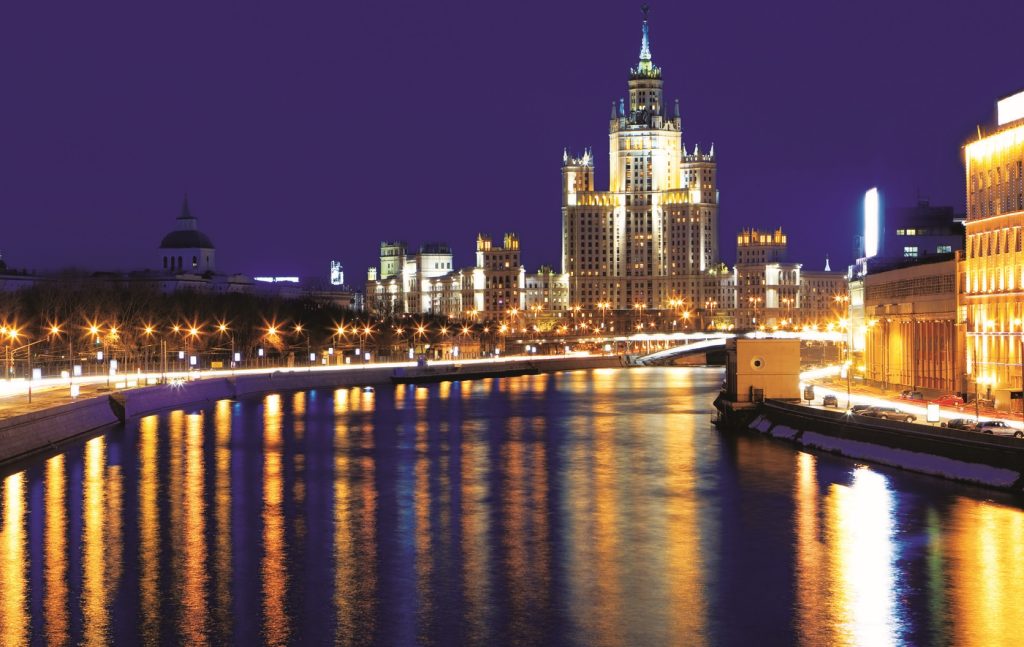
In the past, Moscow was seen as a mysterious city, one that hovered between the East and the West. While modern Moscow has all the offerings of a modern cosmopolitan metropolis, it still retains a certain exotic charm of its own. Russia is of course part of the BRIC (Brazil, Russia, India and China) group of the fastest emerging economies in the world, and Moscow is living proof that the Russian Eagle is flying high.


